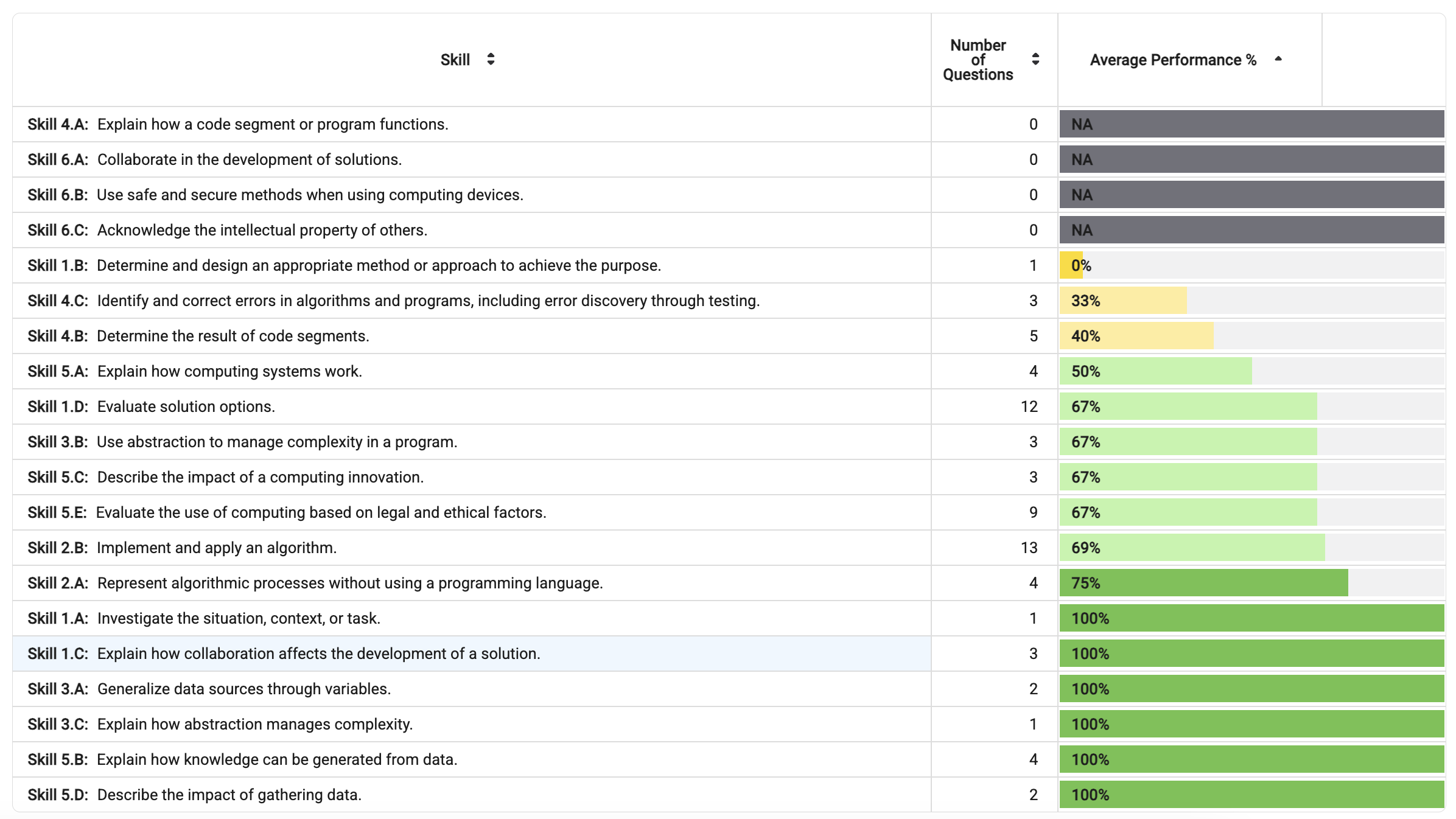Notes On Main Topics
Legal and Ethical Concerns
Show Info
Intellectual Property
- Copyright: Protects artistic and literary works.
- Patents: Safeguards inventions for ~20 years.
- Trademarks: Covers branding and unique symbols.
- Trade Secrets: Keeps business methods confidential.
Plagiarism
- Copying code or algorithms without credit.
- Risks: Legal action, academic penalties, loss of credibility.
- Prevention: Cite sources, work independently, create original work.
Licensing
- MIT: Permissive, allows reuse.
- GPL: Requires derived work to also be open source.
- Creative Commons: Non-software content (music, writing, images).
- Apache 2.0: Open source + patent protection.
Beneficial and Harmful Effects of Computing
Show Info
Beneficial
- Medical Advancements: Surgery, diagnosis, personalized care.
- Business Efficiency: Automation and data analytics.
- Artistic Innovation: New tools for music, visual art, etc.
- Convenience: Faster delivery with drones, remote access tools.
Harmful
- Cyberbullying: Psychological harm, social issues.
- Privacy Loss: Data tracking and surveillance.
- Tech Dependence: Reduced research and thinking skills.
- Job Displacement: Automation replacing human workers.
- Drone Risks: Safety and privacy violations.
Computing Bias
Show Info
Definition
- Occurs when algorithms reflect the prejudices of their creators or data sets.
Examples
- Facial recognition misidentifying people of color.
- Biased hiring tools excluding certain demographics.
Solutions
- Diverse training data
- Inclusive development teams
- Continuous testing and auditing
Crowdsourcing
Show Info
Definition
- Solving problems or collecting data using a large group of people, often online.
Examples
- Wikipedia content contributions.
- Citizen science (e.g., Galaxy Zoo).
- Fundraising on Kickstarter.
Benefits
- Scales quickly, taps diverse perspectives.
Digital Divide
Show Info
Definition
- The gap between those with access to modern computing and those without.
Causes
- Lack of infrastructure, economic inequality, location.
Effects
- Reduced educational and job opportunities.
- Widening social and economic gaps.
Solutions
- Public internet access points.
- Subsidized technology for students.
Safe Computing
Show Info
Practices
- Use strong, unique passwords.
- Enable two-factor authentication.
- Keep software updated.
Risks
- Phishing, viruses, social engineering.
- Data leaks from poor security practices.
Tips
- Think before you click.
- Use antivirus software.
- Avoid public Wi-Fi for sensitive tasks.
Binary
Show Info
Basics
- Only uses 0s and 1s.
- Foundation of all computing data.
Uses
- Arithmetic, circuits, decision making.
Operations
- Binary addition and subtraction.
- Conversion to and from decimal.
Color Codes
- Hex (e.g., #FF0000 = red).
- RGB/RGBA for design and media.
Lists and Filtering
Show Info
Lists
- Ordered, changeable collections of elements.
Filtering
- Extract items based on a condition (e.g.,
cost < 10).
Big O Notation
Show Info
Common Complexities
- O(1) — Constant time (e.g., accessing an array index)
- O(n) — Linear time (e.g., loop through a list)
- O(log n) — Logarithmic (e.g., binary search)
- O(n²) — Quadratic (e.g., nested loops)
Why It Matters
- Helps analyze efficiency and scalability of algorithms.
- Used to compare performance of solutions regardless of hardware.
TOP 5 Areas Of Focus

-
Choosing the best method to meet a purpose
-
Identify errors in code
-
Discovery testing (to find errors)
-
Result of code sections/find missing code
-
Use abstractions (simplifying unnessesary details without messing with the function of the code)
Calendar
April–May Study Calendar
| Week | Mon | Tue | Wed | Thu | Fri | Sat | Sun |
|---|---|---|---|---|---|---|---|
| Apr 21–27 | 23 Review CPT requierments/practrice MCQs | 24 - Legal & Ethics | 25 - Beneficial/Harmful | 26 Review CPT | 27 Submit CPT | ||
| Apr 28–May 4 | 28 - Bias | 29 - Crowdsourcing | 30 MCQ Practice problems (mort sent on CB) | May 1 - Digital Divide | 2 - Safe Computing | 3 MCQ questions review/notes | 4 - MCQ Review struggled sections/redo struggled questions |
| May 5–11 | 5 - Binary | 6 - Lists & Filtering | 7 Practice quizlet on main topics/vocab | 8 Review Sstruggled Lessons | 9 Review Struggled Lessons | 10 Review PPR (PT 1-2) | 11 Review PPR (PT 3-4) |
| May 12–18 | 12 Final Review | 13 Final Review | 14 Final Review | 15 AP Exam |